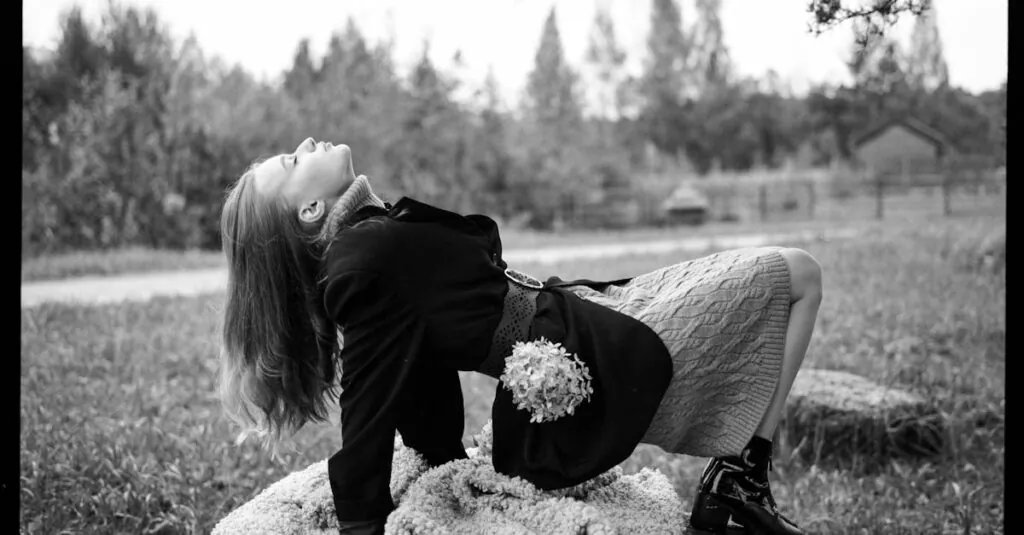Table of Contents
ToggleIn a world where filters reign supreme and contouring could be a competitive sport, natural beauty trends are making a triumphant comeback. Gone are the days of cake-faced makeup and the infamous “Instagram look.” Today, it’s all about embracing authenticity, and let’s be honest—who doesn’t want to look as good as they feel without a full glam squad?
Overview of Natural Beauty Trends
Natural beauty trends emphasize authenticity, moving away from the heavily filtered and contoured makeup styles popular on social media. Consumers favor simplicity, gravitating towards products that enhance their natural features rather than conceal them.
Minimalistic skincare routines gain traction, focusing on hydration and skin health. For instance, options like serums with hyaluronic acid or Vitamin C promote a clear complexion. Makeup brands now emphasize lightweight products, including tinted moisturizers and cream blushes, designed to provide a fresh, dewy look.
Sustainable practices drive choices in beauty products, encouraging the use of organic ingredients and eco-friendly packaging. Many consumers prefer cruelty-free brands that align with their values. Strategies like DIY beauty treatments also attract attention, allowing individuals to create personalized solutions with natural ingredients.
Social media reflects this shift, with influencers advocating for less makeup and more skin appreciation. Emphasis on skincare routines instead of extensive makeup application encourages followers to share their bare-faced selfies.
Trends in color palettes shift towards earthy tones and subtle hues, promoting a more natural aesthetic. These colors enhance one’s features without overpowering them. Seasonal trends prompt individuals to adapt their beauty routines, ensuring products used are reflective of changing weather conditions.
Overall, natural beauty trends unify a sense of well-being, promoting confidence and comfort in one’s skin. Prioritization of self-care reinforces the belief that less can indeed be more.
Reasons for the Rise of Natural Beauty Trends
Natural beauty trends have risen significantly due to several interrelated factors. These trends emphasize authenticity and simplicity while resonating with a growing audience.
Consumer Awareness
Increased consumer awareness drives the demand for cleaner beauty products. Information about harmful chemicals in traditional cosmetics spreads rapidly, prompting consumers to seek safer alternatives. Education around skincare ingredients plays a crucial role in shaping preferences, resulting in greater scrutiny of labels. Consumers prefer products with recognizable ingredients, often choosing those with botanical extracts and vitamins. Brands responding to this shift focus on transparency, sharing ingredient sourcing and manufacturing processes. This clarity helps build trust, encouraging loyalty among consumers. Notably, the movement towards minimalism influences buying habits, as many prioritize quality over quantity in their beauty routines. Recognizing the connection between skin health and natural ingredients fosters a growing interest in holistic approaches to beauty.
Environmental Concerns
Environmental concerns significantly impact beauty shopping choices today. The beauty industry faces increasing criticism over its contribution to pollution and waste. Brands adopting sustainable practices prioritize eco-friendly packaging and responsibly sourced ingredients. This shift influences purchasing behavior, with more consumers favoring cruelty-free and organic options. Awareness of plastic waste leads many to seek refillable or biodegradable packaging solutions. Additionally, consumers become more conscious of product lifecycle, emphasizing the importance of sustainability in every purchase. The demand for natural, environmentally friendly products fuels innovation in the beauty sector, encouraging new standards for responsible sourcing. Overall, environmental considerations solidify the importance of sustainability in consumers’ decision-making processes.
Key Natural Ingredients in Beauty Products
Natural beauty products increasingly highlight ingredients that promote health and well-being. Consumers prefer formulations rich in botanicals, plant extracts, and essential oils for their proven benefits.
Botanicals and Plant Extracts
Botanicals and plant extracts play a crucial role in skincare and makeup. Ingredients such as aloe vera, chamomile, and green tea offer soothing and anti-inflammatory properties. Aloe vera hydrates and heals, while chamomile calms irritated skin. Green tea, rich in antioxidants, protects against environmental stressors. These ingredients promote healthy skin without harsh chemicals or synthetic additives. Brands increasingly highlight these components, reassuring customers about the safety and efficacy of their products.
Essential Oils and Their Benefits
Essential oils deliver both aromatic benefits and therapeutic properties. Oils such as lavender, tea tree, and jojoba provide diverse uses in beauty routines. Lavender oil soothes skin and reduces stress, while tea tree oil combats acne through its antibacterial effects. Jojoba oil moisturizes and balances oil production, making it suitable for various skin types. Each oil contributes to a holistic approach to skincare, reinforcing consumers’ preference for natural solutions. As brands incorporate these oils, customers experience the combined benefits of nature and science.
Popular Natural Beauty Trends to Watch
Natural beauty trends continue to gain traction as authenticity and simplicity become priorities for consumers.
Clean Beauty
Clean beauty emphasizes transparency in ingredient sourcing and product formulation. Consumers increasingly seek cosmetics free from harmful chemicals and synthetic additives. Brands respond with products using recognizable, safe ingredients like botanical extracts, vitamins, and essential oils. The focus on herbal ingredients drives a growing demand for formulations that nourish rather than detract from natural beauty. For example, consumers gravitate toward items infused with aloe vera or chamomile for their calming and soothing properties. This shift reflects a broader awareness of health and wellness, providing customers with peace of mind regarding their beauty choices.
Sustainable Packaging
Sustainable packaging significantly impacts beauty purchases as eco-conscious consumers opt for environmentally friendly options. Brands prioritize materials that reduce waste, such as biodegradable or refillable containers. This emphasis fosters brand loyalty among consumers who desire a positive impact on the planet. Furthermore, elegantly designed recyclable packaging enhances the product’s aesthetic appeal while promoting sustainability. Accessible refill stations for popular items represent a growing trend to minimize plastic usage. This movement highlights the importance of responsible sourcing, which not only attracts consumers but also drives innovation in the industry.
Minimalist Skincare Routines
Minimalist skincare routines gain popularity as individuals seek effective yet simple solutions for their skin health. Skincare enthusiasts favor practices that enhance skin’s natural beauty without overwhelming it with multiple products. Hydrating serums, gentle cleansers, and nourishing moisturizers take center stage in these routines. Fewer products reduce the chance of irritation while allowing skin to breathe. For instance, using a tinted moisturizer delivers both hydration and light coverage. This approach aligns with a broader desire for authenticity, encouraging consumers to embrace their skin while maintaining a healthy glow.
Natural beauty trends are redefining the way individuals approach their skincare and makeup routines. This movement emphasizes authenticity and encourages people to embrace their unique features. With a focus on simplicity and minimalism, consumers are opting for products that enhance rather than mask their natural beauty.
The shift towards sustainable practices and clean ingredients reflects a growing awareness of environmental issues and personal health. As brands adapt to these preferences, the beauty industry continues to evolve. By prioritizing transparency and eco-friendly solutions, they meet the demands of a more conscious consumer base.
Ultimately, these trends foster a sense of confidence and well-being, reinforcing the idea that true beauty comes from within. As this movement gains momentum, it’s clear that less truly can be more.







